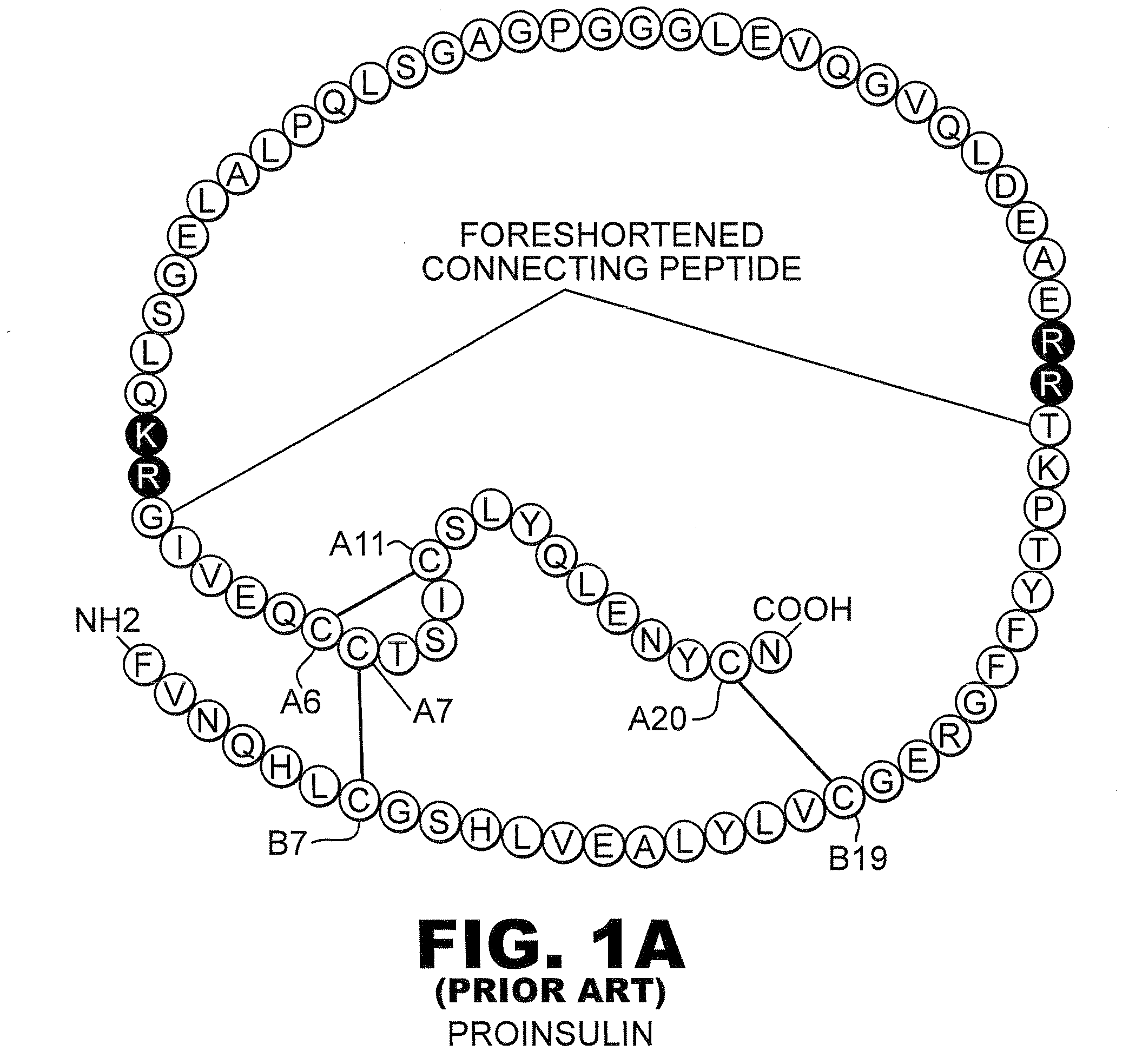Fibrillation resistant proteins
a technology of fibrillation resistance and proteins, applied in the field of fibrillation resistance proteins, can solve the problems of increased fibrillation rate, unpredictable blood glucose level fluctuations or even dangerous hyperglycemia, poor physical stability, etc., and achieve the effects of increasing the resistance of the resulting insulin to fibrillation, increasing the resistance of polypeptides to fibrillation, and enhancing susceptibility to fibrillation
- Summary
- Abstract
- Description
- Claims
- Application Information
AI Technical Summary
Benefits of technology
Problems solved by technology
Method used
Image
Examples
Embodiment Construction
[0031]The present invention is directed toward recombinant proteins that provide increased resistance to fibrillation. Particularly, the present invention provides insulin analogues that are resistant to fibrillation. To that end, the present invention provides insulin analogues that contain histidine (His) residue substitutions at positions A8, A4 and A8, or at B1. The insulin analogues of the present invention may include insulin analogues containing His substitutions at all three of the positions A4, A8, and B1. In one particular example, an insulin analogue of the present invention contains only a His substitution at position B1.
[0032]While not wishing to be bound by theory, it is believed that when the HisB1 substitution is present, the side chain of the B1 His residue, in combination with the B5 histidine side chain, provides a potential B1-B5 bi-histidine Zn-binding site, which confers Zn-dependent protection from fibrillation. Similarly, while not wishing to be bound by theo...
PUM
| Property | Measurement | Unit |
|---|---|---|
| Fraction | aaaaa | aaaaa |
| Substance count | aaaaa | aaaaa |
| Composition | aaaaa | aaaaa |
Abstract
Description
Claims
Application Information
 Login to View More
Login to View More - R&D
- Intellectual Property
- Life Sciences
- Materials
- Tech Scout
- Unparalleled Data Quality
- Higher Quality Content
- 60% Fewer Hallucinations
Browse by: Latest US Patents, China's latest patents, Technical Efficacy Thesaurus, Application Domain, Technology Topic, Popular Technical Reports.
© 2025 PatSnap. All rights reserved.Legal|Privacy policy|Modern Slavery Act Transparency Statement|Sitemap|About US| Contact US: help@patsnap.com



